| |||||
| Decades: | |||||
|---|---|---|---|---|---|
| See also: | Other events of 1902 List of years in Argentina | ||||
| |||||
| Decades: | |||||
|---|---|---|---|---|---|
| See also: | Other events of 1902 List of years in Argentina | ||||

The Argentine Confederation was the last predecessor state of modern Argentina; its name is still one of the official names of the country according to the Argentine Constitution, Article 35. It was the name of the country from 1831 to 1852, when the provinces were organized as a confederation without a head of state. The governor of Buenos Aires Province managed foreign relations during this time. Under his rule, the Argentine Confederation resisted attacks by Brazil, Bolivia, Uruguay, France and the United Kingdom, as well as other Argentine factions during the Argentine Civil Wars.
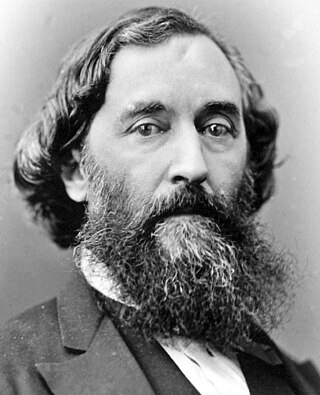
Bartolomé Mitre Martínez was an Argentine statesman, soldier and author. He was President of Argentina from 1862 to 1868 and the first president of unified Argentina.

Alejo Julio Argentino Roca Paz was an army general and statesman who served as President of Argentina from 1880 to 1886 and from 1898 to 1904. Roca is the most important representative of the Generation of '80 and is known for directing the Conquest of the Desert, a series of military campaigns against the indigenous peoples of Patagonia sometimes considered a genocide.
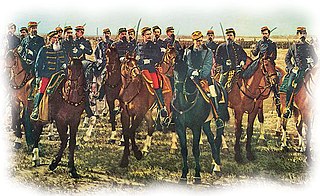
The Conquest of the Desert was an Argentine military campaign directed mainly by General Julio Argentino Roca in the 1870s with the intention of establishing dominance over the Patagonian Desert, inhabited primarily by indigenous peoples. The Conquest of the Desert extended Argentine territories into Patagonia and ended Chilean expansion in the region.

Manuel Vicente Maza was an Argentine lawyer and federal politician. He was governor of Buenos Aires, and was killed after the discovery of a failed plot to kill Juan Manuel de Rosas.

Unitarianists or Unitarians were the proponents of the concept of a unitary state in Buenos Aires during the civil wars that shortly followed the Declaration of Independence of Argentina in 1816. They were opposed to the Argentine Federalists, who wanted a federation of independent provinces. Argentine unitarianism was an ideologic grouping, not a religious one. As such, it is unrelated to religious Unitarianism.

The Federalist Party was the nineteenth century Argentine political party that supported federalism. It opposed the Unitarian Party that claimed a centralised government of Buenos Aires Province, with no participation of the other provinces of the custom taxes benefits of the Buenos Aires port. The federales supported the autonomy of the provincial governments and the distribution of external commerce taxes among the provinces.

Brigadier General José María Paz y Haedo was an Argentine military figure, notable in the Argentine War of Independence and the Argentine Civil Wars.
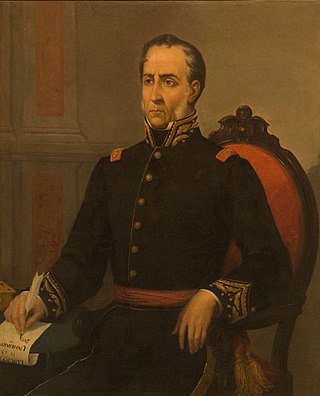
Martín Rodríguez was an Argentine politician and soldier.

Miguel de Azcuénaga was an Argentine brigadier. Educated in Spain, at the University of Seville, Azcuénaga began his military career in the Viceroyalty of the Río de la Plata and became a member of the Primera Junta, the first autonomous government of modern Argentina. He was shortly exiled because of his support to the minister Mariano Moreno, and returned to Buenos Aires when the First Triumvirate replaced the Junta. He held several offices since then, most notably being the first Governor intendant of Buenos Aires after the May Revolution. He died at his country house in 1833.

Feliciano Antonio Chiclana was an Argentine lawyer, soldier, and judge.
The Pacts of May are four protocols signed in Santiago de Chile by Chile and Argentina on 28 May 1902 in order to extend their relations and resolve its territorial disputes. The disputes had led both countries to increase their military budgets and run an arms race in the 1890s.
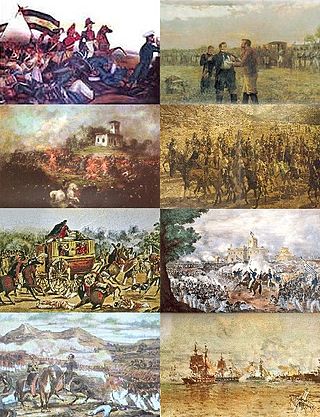
The Argentine Civil Wars were a series of civil conflicts of varying intensity that took place through the territories of Argentina from 1814 to 1853. Initiation concurrently with the Argentine War of Independence (1810–1820), the conflict prevented the formation of a stable governing body until the signing of the Argentine Constitution of 1853, followed by low frequency skirmishes that ended with the Federalization of Buenos Aires. The period saw heavy intervention from the Brazilian Empire that fought against state and provinces in multiple wars. Breakaway nations, former territories of the viceroyalty such as the Banda Oriental, Paraguay and the Alto Peru were involved to varying degrees. Foreign powers such as British and French empires put heavy pressure on the fledging nations at times of international war.

The Argentine Civil Wars were a series of internecine wars that took place in Argentina from 1814 to 1876. These conflicts were separate from the Argentine War of Independence, though they first arose during this period.

Ángel Pacheco, was an Argentine military officer trained by José de San Martín who later became one of the top commanders in the Confederacy during the dictatorship of Juan Manuel de Rosas. He never lost a battle under his command.
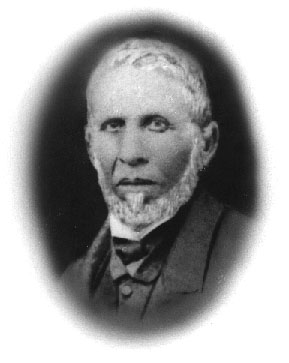
José Santiago Albarracín 1 was an Argentine soldier who fought on the Unitarian side in many engagements in the Argentine Civil Wars, especially in the struggles against Chacho Peñaloza.
The Battle of Rodeo del Chacón, fought in Potrero de Chacón, Argentina on 28 March 1831, was a battle during the civil war between Unitarian and Federalist forces. It ended with the victory of General Facundo Quiroga, one of the most capable and well known of the Federalist caudillos.

Estanislao Severo Zeballos was an Argentine lawyer and politician who was Minister of Foreign Affairs of his country three times. He was one of the most prominent intellectuals and politicians of his time. He wrote on a broad range of subjects in books and periodicals, including Catholicism, history, ethnography and geography.
The Argentine presidential election of 1904 was held on 10 April to choose the president of Argentina. Manuel Quintana was elected president.
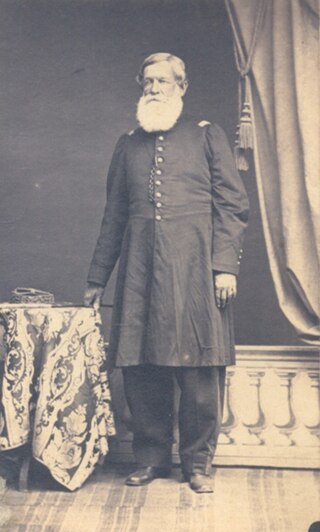
Wenceslao Paunero was an 19th-century Argentine General, politician and diplomat of Uruguayan origin. He was born within the Banda Oriental and would go on to be a major member of the Unitarian Party. He was also the Minister of War and Navy of Argentina and the provisional Governor of Córdoba.